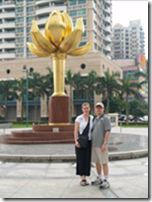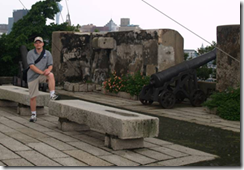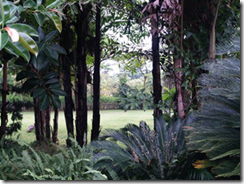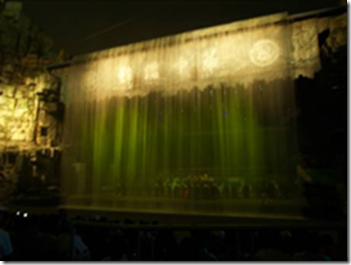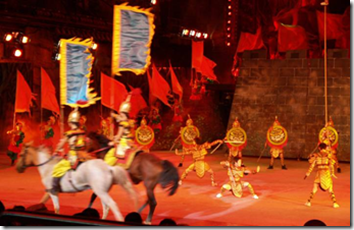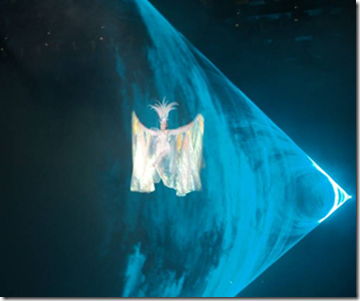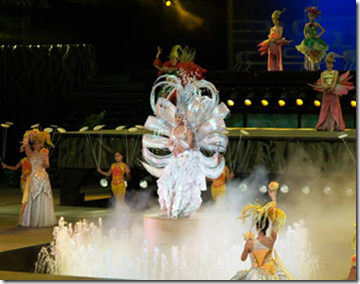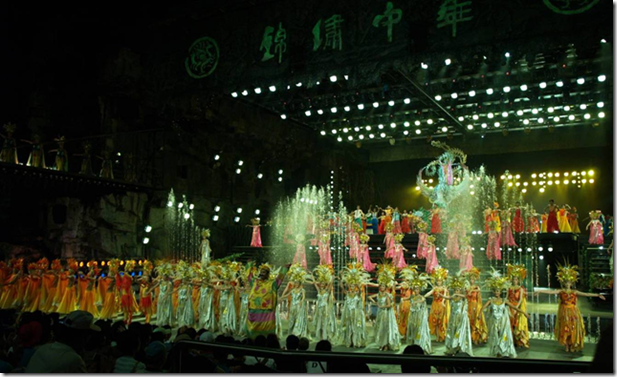Thursday, September 7th – Macau and Shenzhen
Our tour started early – we were out of the hotel after an early breakfast by 7:30am, although the tour guide & tour bus did not arrive on time as anticipated. By 8am we were at the Hong Kong ferry station getting ready to depart.
The ferry was much faster than the traditional Star ferries, but it still took a little bit over an hour to arrive in Macau. Unfortunately, it was a fairly miserable day with grey skies and drizzle.
We passed through the Macau immigration without incident, and re-joined our tour group and began our Macau journey.
Macau is as similar to Hong Kong in as much as it is different. Odd wording? Macau is westernized but has a distinctly European feel which is reflected in the cobble stone streets, small alley ways and churches.
Until very recently Macau was a Portuguese colony and self administered territory until China accepted the return of the small island from the Portuguese, back in 1999.
It is very likely that the Macau of today is the best representation of what "old" Hong Kong used to look like – many high rise slums in a built up area with pockets of more affluent citizens . The smallest things stood out for me – the haphazard nature of the wiring between buildings, as an example.
The essence of Macau is not subtle, and it is no surprise to hear people referring to it as the "Las Vegas of the East". Macau has more casinos than any location in Asia, and gambling is the main trade.
Nearly all inhabitants of Macau have some connection to the casinos or the tourist or service industries. Macau is clearly where Asia comes to gamble, and gambling is something intrinsically Chinese – Joss (luck) is wagered regularly and has been since time immemorial.
Our first destination in Macau was the Golden Lotus, which is the symbolic representation of the handover from Portugal to China.
The Chinese government have tried very hard to create new icons of Chinese origin to overshadow the previous ‘face’ of Macau, i.e. the remains of the church of St Paul. Ironically, our next stop was, in fact, the aforementioned ruins and the Macau museum.
The Museum of Macau is located within an old Portuguese fort (Fort Monte) which sits within close proximity of the ruins. It is remarkably tall, towering above the site of the church and containing many levels. You’d never have guessed by looking at the outside of the fortress.
The history of the Macanese is on display within the walls of Fort Monte . We ascended several escalators and walked around the museum which consisted of several floors.
Inside the museum we looked at traditional Chinese and Macanese furniture and antiques (including beds and roulette tables) as well as a number of posters for products and traditional clothing from across the ages.
We were unable to linger in the museum for too long, as we were directed up to the roof of the museum. The roof contains the original fortress including fortifications and cannons.
One interesting item was an original bell from the mid-19th century, and a number of fort mounted cannon overlooking a commanding view of greater Macau.
As you may observe in the picture to the left, the area surrounding the fort is an interesting mass of run down high rises and narrow cobbled streets.
After several photos and some exploring we returned back to ground level and continued our exploration of St Paul’s. To be honest, there isn’t a lot of it left although the remaining facade is fairly well preserved.
While the rest of the tour group inspected the adjacent Chinese temple (boring) I inspected the original walls of Macau. It was an interesting area and it was a shame we did not have more time to explore further.
Back onto the bus, and our next destination: an ‘arts museum’ which is a nice way of saying ‘tourist shop’. It is what would seem to be a Chinese tradition – a room full of art and then several ‘showrooms’ from where the same items could be bought.
At any rate, we declined to purchase anything (perhaps a mistake, keep reading as to why) and continued on for lunch which was held inside one of Macau’s many casinos. The casino was honestly nothing special (no comparison to Las Vegas to be sure), although lunch was quite nice; an a-la-carte menu with an excellent array of desserts.
|
|
I kept the placemat from lunch as a souvenir (it had a nice map of Macau’s sights) and then we were split into two groups – our group was taken to the harbour for the hydrofoil to Shenzhen.
With our only travelling companion, Rosarie (from Mexico), we boarded the hydrofoil and bid goodbye to our Macau tour guides. The hydrofoil was relatively quick, but the trip still took about an hour and a half to reach our destination. While the ladies caught some sleep, Rob managed to write some notes and do some reading.
Upon arrival in (mainland) China, we had a few difficulties. We were initially met on one side of customs by a tour representative. Whilst most people cleared customs fine, it was apparent that our tour visa had not been properly cleared into the computer system.
Feeling somewhat under suspicion (and surrounded by unhappy armed guards) we sat patiently for about half an hour while the tour representative made phone calls.
Eventually the wheels turned, and we were briskly marched through customs (which felt like an interrogation) and out into a waiting tour van. What an odd experience to have. In any case, our tour continued as we experienced some of the most dangerous driving we’ve ever seen. The border was rather sparse, perhaps even ugly with very little colour.
What buildings we could see looked fairly modern, but uninviting. The sky was overcast and there weren’t many footpaths. Our first stop was a park of some description where a wedding was taking place.
Due to our unexpected delay at the border, we were only given about five minutes to walk through the pleasant area before we were back in the tour van.
Unfortunately, as we were to find out, our next destination (which necessitated an unnecessary 45 minute stop) was a so-called ‘Jade museum’ in the same vein as in Macau. The jade was impressive, but it was far more informative to learn how much the rare jade can cost!
The Chinese sales girls were interested to hear tales of the west and in the many ways our societies were similar in as much as they are different. We bought a jade bracelet for Toni and a glow in the dark rock for Rob (a perfect sphere which weight more than a bit).
We also had personalized chops (like seals in Europe) of our names which were engraved while we waited, made out of coloured jade. We also purchased some lychee tea which was really full of flavour.
Finally, we resumed the tour but found that the language barrier had started to make communication a bit more challenging.
We had difficulty understanding where we were going but we were able to discern our next destination was some sort of cultural theme park and gardens.
The gardens were meticulously sculpted (the same artistry was displayed throughout the recent Beijing Olympic games) and quite extensive, although being later in the day we were quickly losing light.
The main attraction was a Chinese opera presentation called ‘Splendid China’ which was so well received that the Chinese Premier himself had been personally to see it (or so we were told).
There were not many western folks around, although no one seemed to mind. We had dinner here (which was fine, but about the same as the cuisine we had had the previous night). We saw a group of Chinese singers doing some sort of traditional singing before we were gathered for the opera.
The show was actually quite spectacular and a whole lot more than we could have appreciated beforehand. Although it was all in Chinese (unsure which dialect) there were large displays with text in English so we were roughly able to follow along.
The stage was huge! We were told it could easily have over 500 performers on it at any given time, and the hydraulics were state of the art. It was the single most impressive stage I have ever seen.
It’s hard to accurately tell in words exactly how grandiose the presentation was, for it simply had everything. Dancers, martial arts, swordsman, gymnasts, acrobats, horses, fire, flames, arrows, multiple levels and many different sets and props.
There was some sort of folklore theme and the opera involved a number of musical numbers – some sung and many with a full instrumental chorus.
There were historical re-enactments of some description which included sword fights on horseback and large castle/fortress sets with pikemen and evidently kings/emperors and queens.
Towards the end of the show, an impressive laser light featured some sort of symbolic rising of the Queen (most of this was lost on us), the ‘Queen’ was hauled up into the air and suspended before rising up and flying off the set amidst lasers and various lighting actions.
As you can see from the pictures, no expense was spared in the production or the aesthetics. It’s simply impossible to give enough credit to the many fine cast members who did such an amazing job.
The gymnasts rotated in a circle, suspected above the stage on a platform, spinning their partners as they rotated. A man came on and juggled ceramic pots as if they were made of plastic, and a number of gymnasts came out spinning plates in the air on poles as they were lifted into the air.
During the production a wheel of flames was brought onto the stage, and an archer fired a flame tipped arrow to ignite a column of flames.
The grand finale saw all of the production cast on stage for a huge all-cast ensemble chorus, which ended in a crescendo of lights.
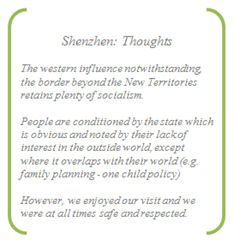 After the show we were taken to a sort of massive shopping complex where there were level after level of small shops selling just about anything you could think of (assuming you were thinking of knock off watches, handbags, DVDs, games or small electronics).
After the show we were taken to a sort of massive shopping complex where there were level after level of small shops selling just about anything you could think of (assuming you were thinking of knock off watches, handbags, DVDs, games or small electronics).
We found the stores to be fairly generic – the prices were all naturally negotiable (handed a calculator with prices which could be altered) and the language was simple: money. Hong Kong dollars happily accepted.
Despite the range of ‘bargains’ we were a bit like lambs to the slaughter. Constantly harassed (not terribly so) we were able to explore some of the levels.
When we all met back and waited for one of the group, we were unfortunate enough to have to withstand the course language of several other Australians who, quite simply, were embarrassing to be associated with (I will not say any more here).
We ended up back on the train system for the return trip to Kowloon. Tired after a very long day abroad, we retired and were happy to enjoy a decent night’s sleep.


